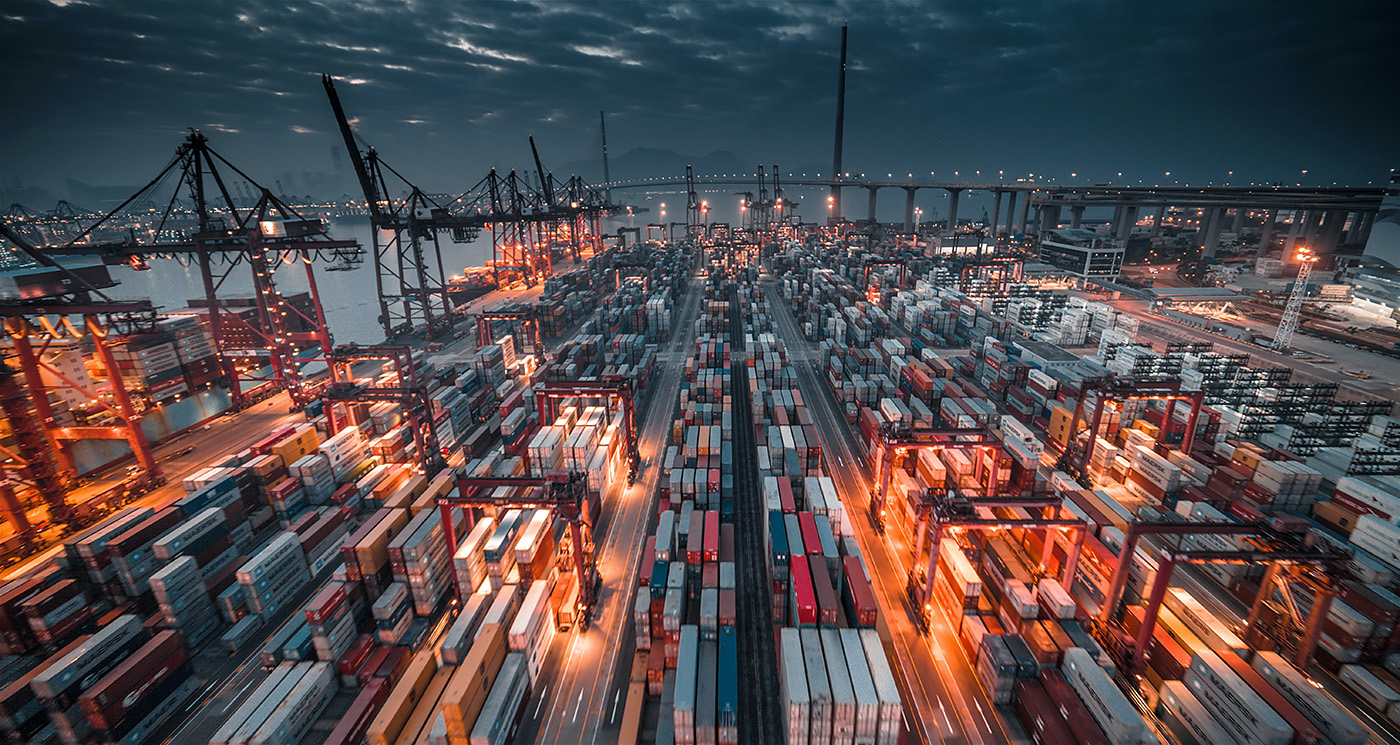In the digital world, we're reaching ever-higher levels of automation and orchestration. We've aggregated enormous datasets, learned how to structure them at scale, and are not only making them accessible to end-users but also actionable through AI.
In the physical world, there is no equivalent. We have 26 different technologies to orchestrate containers in a cloud deployment, but when it comes to physical containers in a shipyard, we still need to get the one from the very bottom of a pile since we have no way to coordinate truck arrivals and container stacking.

This game of large-scale Tetris is just one example of the staggering inefficiencies in physical coordination. Even Europe's most modern mining operation in northeast England still relies on CCTV cameras and clipboards to coordinate contractors and enforce security zones. Police operations continue to use walkie-talkies, and maintenance workers follow rigid schedules rather than dynamic, on-demand allocation.
There are, of course, more modern operations in the physical realm: logistics and delivery, micro-mobility and car sharing, fleet management, and troop coordination for the military all rely on location tracking and real-time maps. However, the decision on how to act on this information still falls to the human operator - and humans struggle to manage complex, dynamic systems effectively.
With Hivekit, we want to change that. Our mission is to bring intelligent coordination and automation to the physical world. To help drivers, riders, workers, machines, and computers work together as highly efficient, self-orchestrating swarms. And by doing so, we want to help companies do more with their existing resources rather than grow ever-larger pools of underutilized vehicles and machines.
The Missing Dataset
But there's a problem: While large language models, coding co-pilots, and AI assistants can learn from the vast information base of the internet, there is no equivalent dataset for the physical world.
With Hivekit, we are creating this dataset — a unique repository of geospatial movements, machine metrics, tasks, routes, and coordination instructions.
We achieve this by building a new kind of platform that provides the complex computational infrastructure for geospatial operations, along with sophisticated tools for tracking, coordination, and automation. This approach delivers immediate value to our users while continuously collecting data and training our model.
Our strategy is structured into three distinct phases - each building on top of the previous one while being ready for go to market from the outset:
Phase 1: Connect & Program
In 2023, we released Hivekit Server - a unique geospatial technology powering our API platform. This global cluster of servers is capable of processing data from millions of vehicles, smartphones, machines, and data sources, streaming updates to thousands of simultaneous users, and running fully programmable business logic on every change.
We will continuously extend this API platform with additional client SDKs and will soon introduce an open and extendable ecosystem of third-party connectors to ingest data from GPS endpoints, APIs, and PLCs, and send it to clouds, apps, and SaaS offerings.
Phase 2: Understand & Control
In 2024, we launched our digital twin interface - a virtual representation of the entire world that provides a real-time view of the position, status, and actions of every worker, vehicle, sensor, and data source within your operations. It includes a UI builder that lets you create custom interfaces for each unit, such as displaying speed, charge level, and current rider for a scooter; a real-time dashcam feed and contact widget for delivery drivers; or a graph of historic utilization for your machines.
Additionally, Hivekit's digital twin features real-time map overlays and time travel controls that let you rewind and replay daily operations on your mining site or analyze traffic patterns leading up to an incident.
However, this digital twin isn't just about understanding what's happening; it's also about control. Assigning tasks and coordinating a workforce is as intuitive as playing a strategy game. Simply select units, assign tasks, and Hivekit translates them into individual instructions, assigns routes and schedules, and tracks and visualizes their progress.
Phase 3: Automate & Optimize
With our unique geospatial dataset accumulated from the API platform and orchestration decisions made by human operators through the digital twin, we can now leverage this data to provide increasingly sophisticated machine-learning-based optimizations.
While this may sound monumental, it is actually much simpler compared to the challenges faced by generative AI companies working with complex images or human language. Hivekit collects clean, machine-readable, and structured data. Its actions are expressed in a simple language called HiveScript, allowing us to use raw data directly for training without the need for tagging, normalization, or other costly preprocessing steps.
Similarly, our ML goals are not about generating complex, human-like language or media but are instead focused on specific, single-value optimizations, such as "for our ride-hailing company, determine the optimal position for each driver throughout the day to minimize pick-up time."
From here, we want to grow into ever-higher levels of optimization and AI-driven automation, allowing for complex logistics, autonomous workforces, and seamless interplay between humans, machines, and operations.
Where we plan to go from here.
There's an idea in here that's arguably a bit ambitious... an idea of a fully connected world in which producers, processors, logistics, and consumers all work together as a hyper-efficient, fault-tolerant, self-organizing swarm.
A world where law enforcement, firefighters, paramedics, and defense can coordinate as decentralized clusters with emergent behaviors.
But also a world where the many don't have to fear the few - where the people at large can access the same level of coordination that was historically instrumental in controlling them.
Will we ever get to see this world? It's doubtful. But it's sure worth trying. Yet we won't get there alone - we'd love to have you along on this journey. If you'd like to join us along the way - get in touch:





